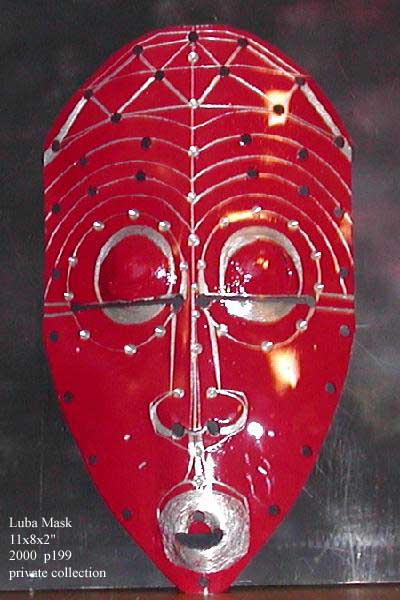Everyday Life 2
Planning for the future without a sense of history is like planting cut flowers...Daniel Boorstein
Painted Aluminum
H.24 W.12.5 D.7" 2000 Portfolio #199
Named for the Chokwe people who are famous for their masks. They are skilled artists who live in the areas today known as the Democratic Republic of Congo, Angola, Zambia. They are believed to be descended from the Mbundu and Mbuti Pygmies.
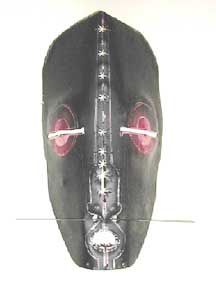
Food Preparation I
H.19 W.16 D.11inches 1996 Portfolio #6
Wire, Aluminum, Found
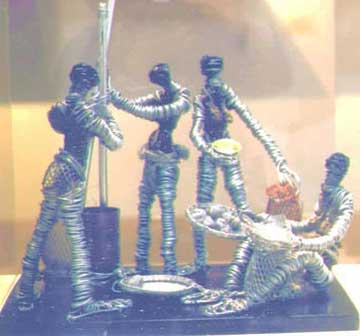
Banana Harvest
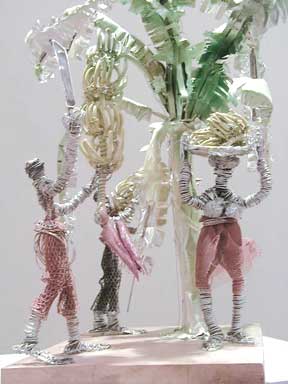
Pygmy Hut
In the heart of Africa, in northeast Congo, lies the Ituri Rain Forest, a tropical forest that forms a dense wall of nearly impenetrable vegetation. Gigantic trees form a canopy that blocks direct sunlight Vines, snakes, clouds of insects, leopards and constantly dripping water are part of everyday life.
Even today, parts of the rain forest remain unexplored by outsiders. Villagers in the surrounding cleared areas often prefer not to venture very far into the Ituri.
However, deep inside this mythical and humid sanctuary, the BaMbuti people have lived for thousands of years. They have not tried to conquer and change this giant forest, preferring to live in harmony with it. In return it supplies all their needs for survival.
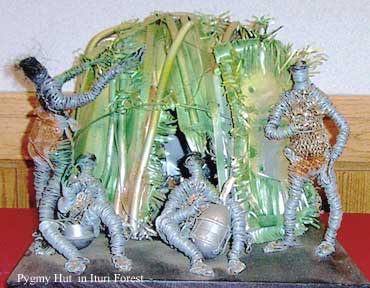
Banana Harvest
When the Portuguese met the people of Kongo they recorded that the Kongolese raised goats, pigs and cattle, cultivated yams and bananas and gathered other wild fruits. They enjoyed music and dance and were accomplished in both.
In 1482, Kongo was a strong nation with a good economy. The Bakongo, as the people were called, mined and smelted iron ore and worked it into weapons, tools, ornaments and musical instruments. They were knowledgable in the lost-wax method of molding copper statues, fetishes and jewelry.
They wove beautiful fabric from the raffia palm, which the Portuguese at first mistook for velvet and brocade. They also made another type of cloth from tree bark.
They made harpoons and wove baskets and nets with which to fish the rivers of the area. They also used palm fibers to weave mats and ropes and fishing and hunting nets. They made pottery, were skilled at wood and ivory carving and used cowrie shells as money.
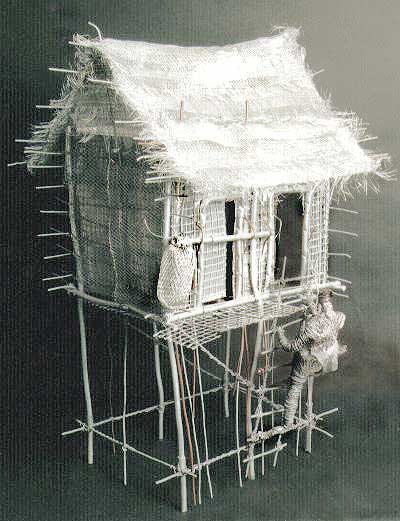
Two Hunters With Antelope
H.14 W. 24 D.11 inches, 1994, Portfolio #97

Luba Mask
